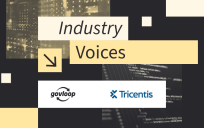With the American Rescue Plan (ARP) providing a surge of funding for transformation initiatives, agencies are faced with a dilemma: How do you decide which projects are the best investment?
The U.S. General Services Administration (GSA), which helps run the federal Technology Modernization Fund (TMF), developed criteria for distributing funding to federal agencies. But GSA and other organizations have offered other guidance that can help put projects into perspective.
Here are some ways of looking at them.
A Problem/Solution Lens
As part of the TMF application, GSA asks several overarching questions that urge agencies to articulate potential impacts. This is a good starting point for considering a project, because if the impact is unclear, there’s no point in looking at more specific criteria.
The three questions get at a program’s impact both in terms of the problem being solved and the solution being proposed, with the user perspective kept front and center.
Question 1: Describe the problem this project solves and how its successful execution solves the problem. Please include specific information that explains the scale of the problem or impact this project will have.
Question 2: Provide a summary of users who will be directly impacted by this project. For each type of end-user, please describe who they are, the size of the population affected, and what will change for them as a result of this project.
Question 3: Describe the current state of the problem and the issues and challenges it is causing. Include information regarding the current solution, including cost and any technology involved. Describe the proposed changes in technology stack, policy, or process that will be implemented.
GSA also includes a question on the proposed product schedule and the “cadence for capability releases.” In short, GSA encourages agencies to pursue an approach that “generates value in the near term” and on a recurring basis, rather than promising a big impact at some point down the road.
A Feasibility Lens
However promising a project might sound, you need to look at it with a jaundiced eye and ask: Is it feasible?
In a report titled “Developing a Framework for Successful Modernization Projects,” the American Council for Technology-Industry Advisory Council (ACT-IAC) recommends weighing six factors as you make a go/no-go decision:
Economic feasibility: What is the net benefit of a proposed project? Weigh the potential outcome with the expected costs to the agency, other agencies and the general public, as well as any risks involved.
Technical feasibility: What technical resources
are required to convert the idea into a working system? ACT-IAC recommends developing a high- fidelity prototype to test technical feasibility and get stakeholder buy-in.
Legal feasibility: Does the proposed project conform to the necessary legal, ethical, and contractual requirements and obligations, such as federal
and state laws, security requirements and agency-specific policies?
Operational feasibility: Can the proposed product or service work within the organization? What impact will it have on different stakeholders and processes? What kind of resistance might it meet?
Schedule feasibility: Is the proposed timeline reasonable when measured against existing projects and available resources? Look at due dates, dependencies, milestones, assigned resources.
Administrative feasibility: Can the organization effectively manage the execution of the proposed project? Consider both external and internal factors that could affect its success.
A Cost Lens
While many things go into deciding whether to move forward, every decision eventually comes back to money: How much will it cost, and how much will it save? Unfortunately, that can be tricky.
In testifying before Congress in May 2022, the U.S. Government Accountability Office (GAO) noted that many of the early projects TMF funded had not, at that time, delivered on their intended savings — in part, because the original cost estimates were off the mark.
In May 2020, the watchdog agency created a guide to estimate and assess costs. According to the guide, a sound cost estimate should be:
- Comprehensive. The estimate should include all lifecycle costs, a work breakdown structure, and ground rules and assumptions.
- Well-documented. Estimate documentation should describe how the source data was used, the calculations performed and their results, and the estimating methodology used.
- Accurate. It should be based on historical data or actual experiences with other comparable programs and be updated regularly to reflect changes in the program.
- Credible. The estimate should incorporate the results of sensitivity, and risk and uncertainty analyses.
If the overall assessment rating for each of the four characteristics is not fully or substantially met, then the cost estimate is not reliable, GAO said.
This article appears in our guide, “Unpacking Digital Transformation.” To read more about how agencies are getting the most out of their modernization and transformation efforts — and the handy worksheet on evaluating projects — download the guide.





Leave a Reply
You must be logged in to post a comment.